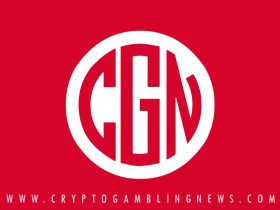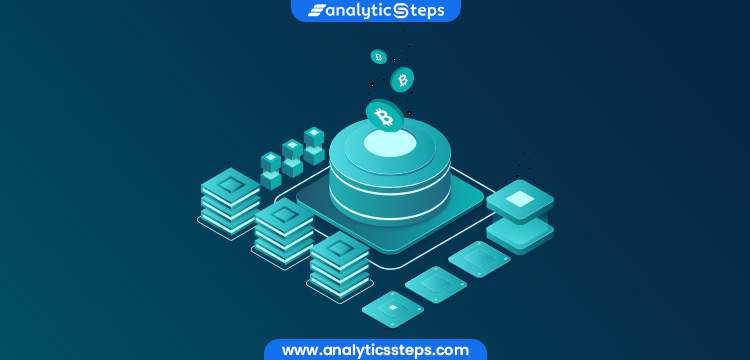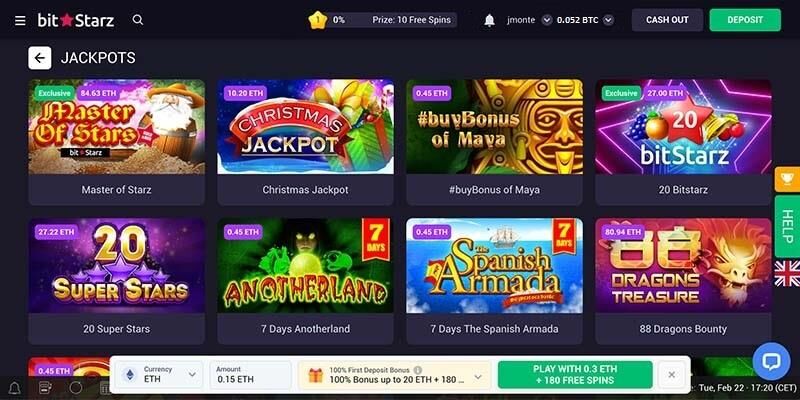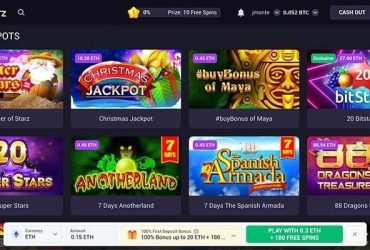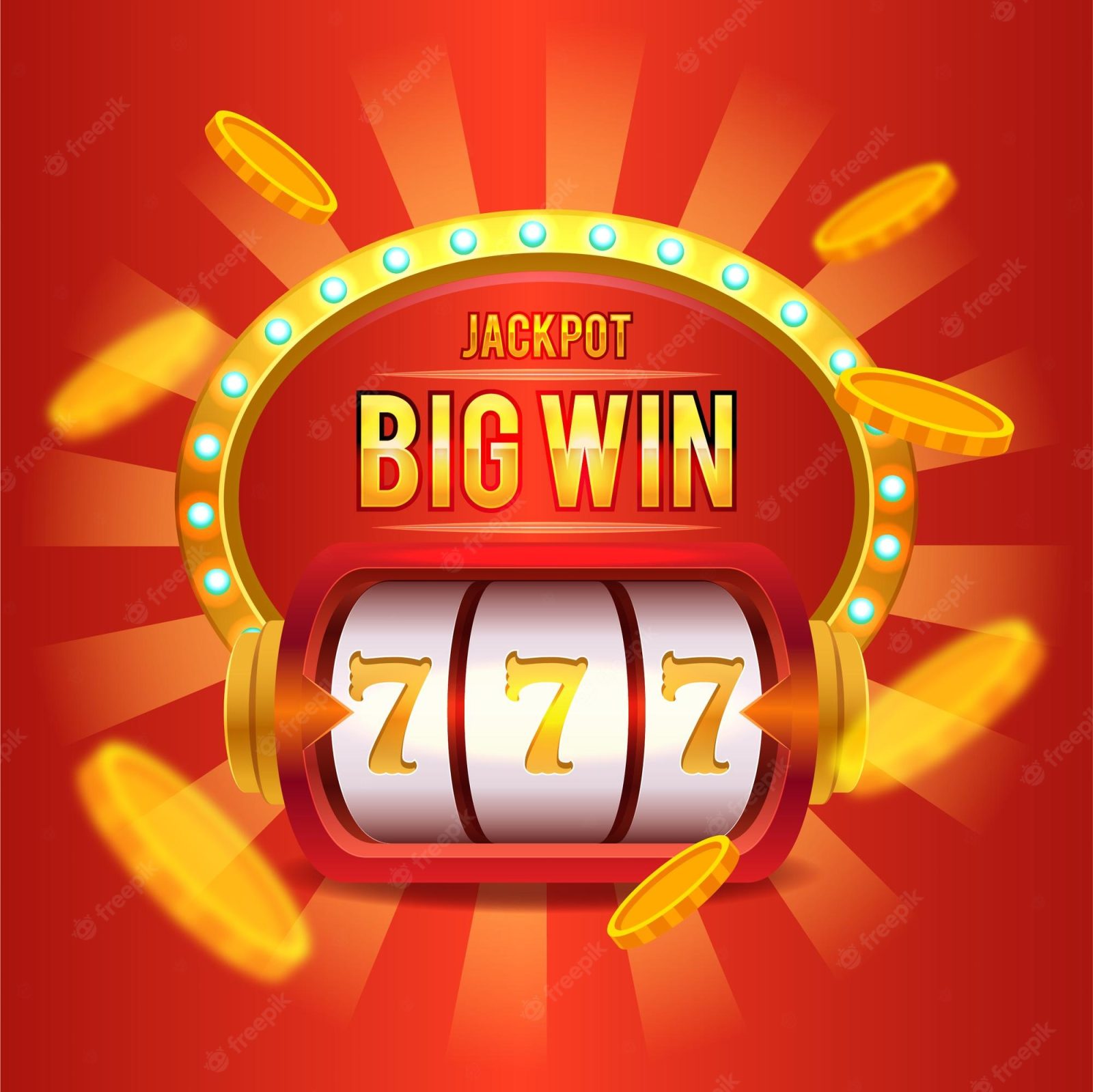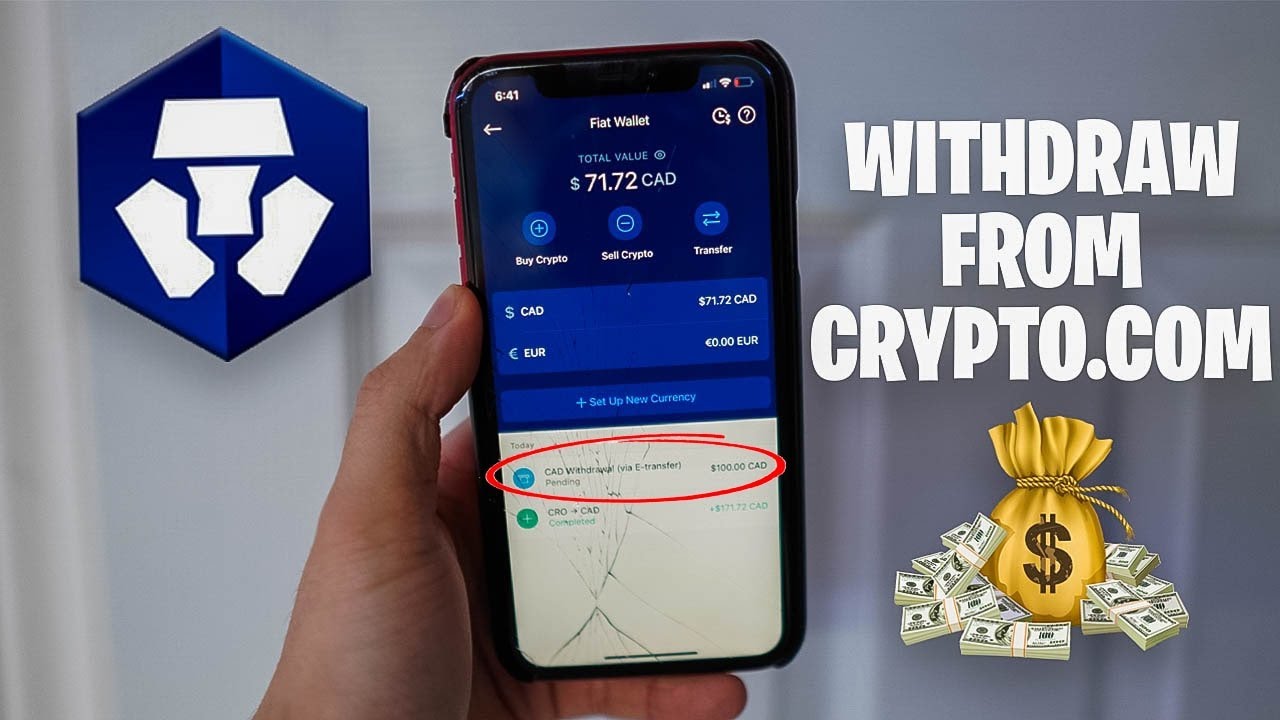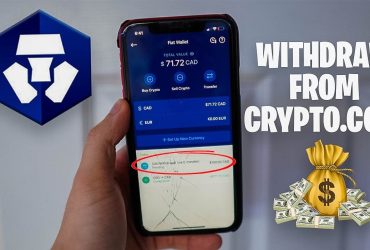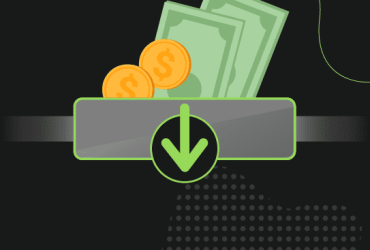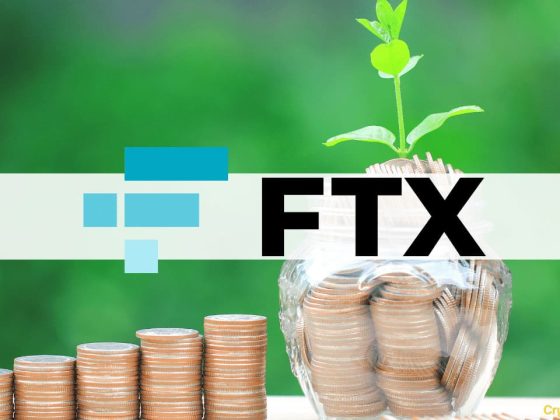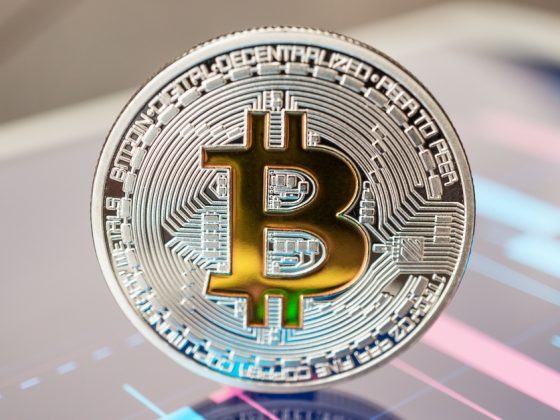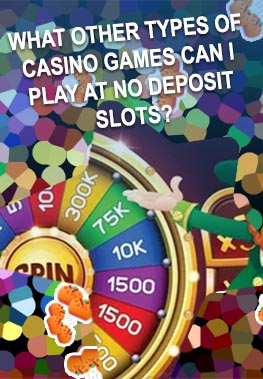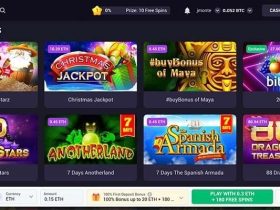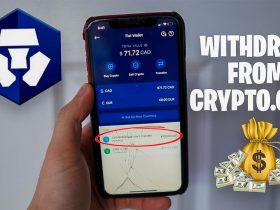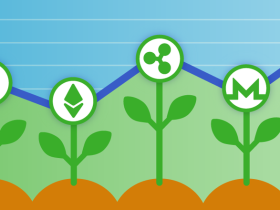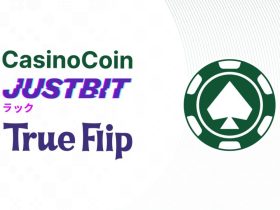- ADVERTISEMENT -
Editor's Pick
No deposit free bets are a great way to attract new ...
When you need to get a copy of a death record, ...
The Australian Securities and Investments Commission (ASIC) has actually gotten in ...
More News
Popular News
What is Staking Crypto?
Ignition Casino – Bitstarz Welcome Bonus
Where Can I Buy Casino Coin Crypto?
How to Withdraw Money From Cryptocom
The Next Big Cryptocurrency 2022
Latest News
Latest Posts
| # | Name | Price | Changes 24H | Market Cap |
|---|
SITES THAT ACCEPT BITCOIN AND OTHER CRYPTO CURRENCIES AS PAYMENT
Unexpectedly, the casino sector has emerged as a shelter for cryptocurrency-related businesses and services, which is not entirely unexpected. Bitcoin and Cypto gambling sites are well aware of the fact that cryptocurrencies, like as bitcoin, are the ultimate antidote to government regulations according to Zovovo.com’s Kripto Para Siteleri content.
As a result, the spread of cryptocurrency gaming activities has had a significant influence on the growth of the cryptocurrency industry.
While this is unavoidable, the proliferation of cryptocurrency gaming sites has also raised the likelihood of being a victim of fraud or signing up for poor gambling services.
As a result, it has become critical to evaluate the top bitcoin gambling sites in order to make informed decisions.
This tutorial will cover the principles of cryptocurrency gambling, as well as some of the defining characteristics of the industry, and will introduce you to our selection of the best cryptocurrency and bitcoin gambling sites.
Bitcoin Gambling and cryptocurrency gambling are two terms that are used to refer to the same thing.
Unlike traditional gambling sites, crypto gambling platforms have everything you’ve come to expect from them, although with an atypical business model that allows players to wager using digital assets such as bitcoin.
In other words, users will be able to wager using cryptocurrency rather of the fiat currencies that are commonly used in traditional gaming sites.
Because of the spread of these solutions, it is reasonable to assume that cryptocurrency is beginning to emerge as a viable option for those involved in the gaming industry.
WHAT IS THE REASON BEHIND THIS?
The ability to evade geo-restrictions is the primary reason why cryptocurrency and bitcoin have grown so popular within the gaming industry in recent years. As a result, it is possible to circumvent the rigorous rules and monitoring that a majority of nations are putting on gambling operations by combining cryptographic technologies that provide anonymity.
Another aspect driving the discussion about bitcoin gambling is the cheap transaction price that has been associated with cryptocurrencies in recent years. As a result, consumers may be certain that all gaming site operations will be subject to transaction fees that will not adversely affect their profits. Gambling platforms that fully embrace the decentralization that blockchain technology provides may also create transparent ecosystems, which is advantageous.
All of these variables have come together to make cryptocurrencies and bitcoin the most suitable payment method for gaming websites and applications.. These websites, on the other hand, have implemented cryptography in a variety of methods. It goes without saying that this has resulted in an increase in the number of gaming platforms that include various degrees of blockchain and crypto technology.
WHAT IS THE BEST WAY TO GAMBLE WITH CRYPTOCURRENCY?
Apart from the use of cryptocurrency instead of fiat currency and the transparency provided by blockchain technology, there is nothing particularly unique about crypto gaming. In essence, participating in crypto-casino and betting games is not as difficult as you may imagine. The main difference is that you place bets and win bitcoin instead of fiat money.
THE DIFFERENT KINDS OF BITCOIN OR CRYPTOCURRENCY GAMBLING WEBSITES
We may divide crypto and bitcoin gaming sites into two primary categories: hybrid crypto-bitcoin gambling sites and crypto-bitcoin-only gambling sites.
PLATFORMS FOR ONLINE AND OFFLINE GAMBLING
In this category are typical online casinos, poker rooms, and bookies that have progressively incorporated a cryptocurrency aspect into their business model over time. In other words, the site accepts both fiat currency and digital assets as payment methods.
As a result, hybrid gaming operators have a wealth of knowledge and expertise to draw from when it comes to running a profitable gambling establishment. While this is a given, it also implies that users may be required to go through extensive registration procedures in order to comply with the regulatory requirements of the country in which the gambling operator is based.
In addition, the opaque business model that is often associated with traditional gambling services may come into play in a hybrid ecosystem, given that the vast majority of these entities only made one or two tweaks to their operations in order to adopt cryptocurrency or only bitcoin in the first place. Aside from these disadvantages, hybrid gambling websites are secure and simple to use, since the features and games are all well-known and not too complicated to begin with. Cryptocurrency sports betting platforms are a good illustration of this.
The Crypto-Only Gambling Ecosystem is a subset of the broader gambling ecosystem.
By supporting solely cryptocurrencies instead of hybrid gambling websites, crypto-only platforms take an innovative approach to enabling gaming infrastructures, as opposed to hybrid gambling websites. Because of this, you have the option of avoiding KYC requirements and keeping your gaming activities secret.. In certain cases, these platforms embrace all of the benefits of blockchain technology, which implies that decentralization might play a significant role in the design of the games.
This means that crypto-only platforms have the ideal business model to establish a trusted connection with their clients and gain their loyalty. Furthermore, crypto-only platforms might either continue to provide conventional gambling games or develop new ones that take use of the blockchain’s and cryptocurrency’s unique and creative capabilities.
However, there are certain disadvantages. Crypto-only gaming sites continue to fall behind the competition in terms of service quality and overall user experience. Because crypto-only gaming websites have little or no registration restrictions, its customers are more vulnerable to frauds than the general public. In order to make an informed decision, it is essential to weigh the pros and drawbacks of utilizing both types of gambling websites before making a decision.
The following part will introduce you to some elements that may assist you in selecting the most appropriate crypto gambling platform now that we have described the fundamental workings of crypto gambling platforms as well as their categorization.
IS IT LEGAL TO PLACE BETS ON CRYPTOCURRENCY?
The need of investigating the legality of cryptocurrency gambling websites has grown as a result of the hazards associated with them. It should be noted that gambling on its own is considered illegal in certain jurisdictions. Consequently, when cryptography is included into the picture, it becomes even more difficult to overlook the legal ramifications of such conduct.
The ability to ban those online gambling businesses that only take bitcoin and other popular cryptocurrencies is particularly difficult. The choice to limit their payment method to digital currencies that are borderless and censorship-resistant enables them to operate a crypto gaming site that is accessible from anywhere in the world.
Having said that, we have discovered that the majority of cryptocurrency casinos choose to situate their offices in countries or places that have favorable legal frameworks for gaming and cryptocurrencies. These platforms, on the other hand, do not take any risks when it comes to the way they operate. As a result, you will almost certainly discover that nationals and residents of the United States and the United Kingdom are often barred from visiting cryptocurrency-focused gaming websites.
Hybrid platforms, on the other hand, must adhere to stringent industry standards, particularly if they want to appeal to a worldwide audience of consumers. As a result, you will be required to authenticate your identity before to or after registration on such websites, as described above. Similarly, anytime you make a deposit or a withdrawal, you will very certainly be subjected to anti-money laundering procedures.
In order to determine the legality of crypto betting, you may need to consider the legal standing of your nation as well as the capacity of the crypto betting website to fulfill the regulatory criteria of your country’s jurisdiction. In other words, you should do due research before deciding to utilize a gaming website that is mostly focused on digital assets.
IS CRYPTOCURRENCY GAMBLING A SAFE BET?
As previously stated, gambling has a number of inherent dangers. The first is that it is difficult to establish the fairness of traditional gambling games, which is a major drawback. Some illegal gambling service providers create their games in such a manner that it is impossible to gain money from playing them. In other instances, the gambling websites are already aware of the result of games before they begin. As a result, they have an easy time manipulating the system to their benefit.
This is where the concept of provably fair technology comes into play. It is feasible to establish a transparent method for certifying the randomness of games with the assistance of blockchain technology. Increasingly, cryptocurrency gambling companies are using this strategy into their games. They even go so far as to provide tips on how to determine whether or not a game is legitimate. So, the next time you decide to participate in an online crypto casino game, be sure that it is fair according to provable standards. This feature ensures that you are protected from any and all sorts of manipulation.
Another important factor to consider before engaging in bitcoin gaming is the level of security provided. Please keep in mind that in order to participate in the offered games, you must first fund your gaming account with digital assets. When you do this, you are unknowingly subjecting your cash to the security system of the online gambling sites you are visiting.
As a result, the security of your cash is highly dependent on the security architecture of the gaming platform that you choose. When you consider that cryptocurrency platforms are increasingly being targeted by hackers, the security issues connected with this kind of gaming site become even more apparent.
Additionally, data theft is a hazard that should be taken into consideration. This is especially frequent on platforms that keep users’ data in order to conduct KYC and AML checks.
METHODS FOR REMAINING SAFE WHILE USING CRYPTOCURRENCY GAMBLING WEBSITES
As a result of being aware of the security dangers associated with utilizing a cryptocurrency gambling website, you may be interested in knowing that there are steps you can do to mitigate the risks. They are as follows:
Choose games that can be shown to be fair: As previously noted, one of the primary advantages of using crypto-focused gambling sites is the transparency they provide. You should not, however, believe that all gambling sites that embrace cryptocurrency will immediately offer verifiable and audible gaming systems. It is your responsibility to carefully read the small print, ask questions, and get confirmation from the customer support staff if such a function is available. Furthermore, ensure that the website gives an easy-to-follow guidance on how to determine whether or not a game is fair before playing it.
Activate two-factor authentication: You should only gamble on websites that provide a second layer of protection against unauthorized access. This functionality enables the platform to limit the number of instances of illegal access resulting from stolen devices or fictitious identity. With two-factor authentication, you may add an additional identity verification procedure to critical operations such as withdrawals and account login processes, allowing you to protect more sensitive information.
Deposit just the money you require: It is recommended that you handle your gaming wallet account in the same way as you would an exchange wallet account. As a result, you should always consider them to be a temporary cryptocurrency wallet. Do not put monies into your account if you do not intend to place bets on sports right away. In the case of a hack, you will be protected from suffering major financial damages.
Withdraw your gains: It makes no sense to have your profits collecting on your gaming website or platform. Instead, it is preferable to remove gains as quickly as possible after increasing your withdrawal limitations. It is important to read and comprehend the terms and conditions that apply to withdrawals on your selected cryptocurrency gaming website in light of this information. If you are considering platforms with unreasonably high minimum withdrawal limitations, you should think again. It is even more important to avoid financial institutions that only handle withdrawals on specified days of the week. When it comes to bitcoin gaming, withdrawals should be as quick and as instantaneous as possible to avoid any delays.
Keep in mind that we already said that money was not the only thing at risk. During a security breach, you may potentially lose access to your personal information. As a result, choosing crypto gaming sites that protect the privacy of their customers is a wise decision for them. Platforms that fall within this category do not require users to provide KYC or AML information. To put it another way, users are not vulnerable to data breaches or thefts.
ONLINE CASINO VS. SPORTS BETTING: WHICH IS BETTER?
When it comes to bitcoin gambling sites, there are two types of gambling systems that are often utilized as templates for playing and receiving prizes. The first of these options is sports betting. Users may place bets on the results of sports events like as boxing, horse racing, greyhound racing, football games, virtual games, and so on using this service. Even events that are not associated with sports are permitted on certain sites, according on the terms of service.
Users may put wagers on the likelihood that an event will take place, which is determined by the gambling site and shown on its website. As a result, you would have to wait until the event was completed before finding out the outcome of your wager.
On the other hand, an online casino offers a greater variety of gaming material that is mostly focused on the gaming collection that you would find in a brick-and-mortar establishment. The most important thing to remember is that typical online casino games should cover everything from table games to poker to video slots to progressive jackpots and much more. When it comes to choosing an online casino, the size of the gaming collection is non-negotiable, particularly if you want to play just casino-related games.
For the purpose of rewarding players for their continued participation, online casinos often provide daily, weekly, and monthly bonuses, promotions, and other incentives. In the case of online casinos, new customers are often rewarded with welcome bonuses when they register or make their initial deposits. Online casino bonuses are most often offered as free spins, match deposit bonuses, or cash-backs, depending on the casino.
IDENTIFYING THE TYPES OF CRYPTOCURRENCY BETTING SITES
We went into great detail on the two primary kinds of cryptocurrency gaming sites that are now accessible. In addition, we discussed the advantages and disadvantages of each categorization, and we recommended that you take these factors into consideration in order to focus your search to a single classification.
In the first place, if you are not a fan of Know Your Customer (KYC) standards, it goes without saying that hybrid cryptocurrency gaming platforms, which need KYC registration, are not ideal for you. Also, if you feel that fiat currency may come in useful at any time during your gaming experience, you should avoid using pure virtual money platforms. Having a general concept of what to anticipate from a regular cryptocurrency gaming site, it becomes much simpler to narrow down your search to a certain categorization.
WHAT IS THE REGULATORY POSITION OF THE CRYPTO GAMBLING SITES
It is critical for consumers who are considering hybrid gaming platforms to understand the regulatory position of the casino operator before making a decision. First and foremost, you should inquire as to whether bitcoin gaming is permitted in your jurisdiction. Note that the vast majority of nations have implemented legislation that regulates the activity of gambling intermediaries.
Furthermore, the degree of strictness of such laws is determined by the nation in which the gaming operator is based. Typically, these operators must seek clearance from authorities and get a gaming license before they may operate a legal gambling operation in their jurisdiction. As a result, we recommend that you find the licensing body that issued the crypto gambling platform under consideration before using its services to your advantage.
However, it is more vital to look for gaming platforms that are situated in jurisdictions that have been recognized to pass legislation that protects consumers from scams and other security-related misadventures. On the other side, the likelihood of discovering crypto-only gaming sites that have been licensed by trustworthy commissions is quite limited, if at all. Although this is true, it is also true that the vast majority of these entities are open-source initiatives that, to a certain degree, ensure the fairness of their respective games.
THE TYPES OF GAMES THAT ARE AVAILABLE ON THE PLATFORM
Following the verification of the legality of the gambling platform, the following step is to investigate the types of games that are available on the platform itself. You should look at the range of gambling games that are accessible on the website before making a decision. This is the point at which you must select if you seek the services of a cryptocurrency online casino or a cryptocurrency sports betting website.
If you want to play online casino games, be sure that the casino you choose has a diverse selection of games so that you do not have to establish several accounts at other online casinos simply to have access to additional gaming alternatives. If you decide to use a bookmaker, it is vital that you evaluate the variety of events or sports that you may wager on, as well as the odds that are offered.
Even better, you may select an online bitcoin casino that offers betting services for a variety of sports, which is a wise course of action. Casino and betting services are both available on such sites.
THE OVERALL QUALITY OF THE PROVIDED SERVICES
While it is important to establish that the platform under consideration is capable of providing a wide range of gambling services, it is as important to ensure that the gambling operator delivers high-quality services, regardless of the number of games it includes. In order to avoid this, it is preferable to stay with a platform that is skilled in one or two games rather than choosing one that contains all of the games but cannot guarantee top-notch services.
The Gambling Platform’s Reputation is important.
In the world of gambling, having a good reputation is quite important. As a result, you should research the track record of the cryptocurrency gaming website. Check to see whether any security-related concerns have ever been documented. If the organization has encountered security failures, be certain that it handled such issues in a professional manner as well. Additionally, you may look at its position within the worldwide gaming community. What kind of contests does the platform support on a worldwide scale, and what kind of ways does it have to give back to the community?
User Experience, Mobile-Friendliness, and a Responsive Interface are all important considerations.
There should be no stone left when it comes to providing simple and responsive interfaces for online gambling providers. Overall, consumers should find it simple to browse the bitcoin gaming website and should have rapid access to new features and improvements. It will astound you how much time and money gamers waste as a consequence of a sluggish or unresponsive interface.
Another key factor to examine is whether or not there is a mobile app available for download. In addition, make sure that the bulk of the platform’s essential functions are available from the mobile version of the app. All of these factors would combine to decide the kind of gaming experience that the platform might provide. As a result, we recommend that you carefully examine the user experience, mobile friendliness, and design of the platform you are considering implementing. This may be accomplished by just going and touring the bitcoin gaming sites on the internet.
THE CUSTOMER SERVICE-ORIENTED CULTURE
Gambling is an intensive pastime that elicits a great deal of passion and emotion from the participants. Users who are dissatisfied with their online gaming experience often focus their dissatisfaction onto gambling companies. It would be determined by the customer service culture of the crypto gaming platform how it would deal with such scenarios if this were to occur.
An online gambling platform with weak feedback methods, or one that has a reputation for keeping consumers in the dark, is not something you want to be a part of. The following are the prerequisites for cryptocurrency gaming platforms: 24-hour customer service and a diverse range of contact methods, such as live chats and email assistance, among others.
HOW MUCH TRAFFIC DOES THE WEBSITE GET?
In order for gaming systems that provide betting exchanges and bitcoin poker rooms to function, a certain amount of traffic would be required. It does not harm to spend some time researching the average number of players who frequent the website and how these numbers may impact your odds of winning, even if this does not apply to the vast majority of other gambling games. Furthermore, there are instances in which having a large number of participants in a single game might lower the frequency with which you make money.
Bonuses and promotions are available to you.
Most online gambling companies include welcome bonuses, free spins, and cash-backs to entice new customers and keep existing customers interested even when they do not have enough dollars to place bets. However, in the majority of situations, these incentives are accompanied with stipulations that, over time, render their advantages null and void.
Consider the following scenario: a bitcoin gambling website may set a condition that requires you to earn a certain amount of money before you can pay out your bonuses. When it comes to cryptocurrency gaming platforms, the prizes and bonuses that are available when you sign up or hit a certain milestone should be considered, but you should also consider if the offers are worthy before committing your money.
CONDITIONS FOR MAKING DEPOSITS AND WITHDRAWING FUNDS
Due to the fact that certain crypto and BTC gambling sites accept a broad range of payment alternatives, while others only accept major cryptocurrencies, this part of the crypto and BTC gambling model is a little problematic. Because they let users to deposit and receive their profits using fiat currencies as well as traditional payment methods, the former falls into the hybrid category. The latter, on the other hand, is exclusively geared for cryptocurrency investors. As a result, it sees no need to continue to support conventional payment methods.
In addition, it is critical to establish how long it will take to remove cash from an account. The fact that many bitcoin gambling sites have waiting periods before withdrawals are approved shows that they have no need to hang onto their profits for any longer than is absolutely necessary. In the same vein, be certain that the minimum withdrawal limit is not unreasonable.
Privacy
Because of the secrecy that crypto gambling websites give, gamers who are concerned about their privacy often turn to them for entertainment. Some of the most important characteristics that such persons search for include data encryption solutions and registration procedures that do not need them to provide KYC information. For those that fall into this group, it is important to ensure that the platform you are considering using is in line with your privacy requirements.
The Website’s Defense System is comprised with
Digital asset gaming platforms, like every other cryptocurrency service available, must employ industry-standard security measures. This argument is based on the particular security needs of digital asset storage systems, as well as the increasing number of examples of cryptocurrency hacks in the media. As a result, before making any deposits, you should check the legitimacy of the crypto gaming website in question. Two-factor authentication, advanced encryption, and the steps taken by the platform to control threats are all things to keep an eye out for in the future.
Following our discussion of some of the variables that might assist you in selecting the best crypto gambling platform, the following part will introduce you to our list of the top crypto gambling platforms, as well as the process we used to compile the list.
In order to compile its list of the best cryptocurrency and bitcoin gambling sites, Geeba used the following criteria:
We at Geeba have chosen to devote this review section to the best platforms that enable users to bet with bitcoin or other cryptocurrencies, in recognition of the fact that crypto gambling has grown to become one of the most important areas of the crypto business. Considering all of the guidelines stated previously in this guide was necessary in order to construct our list.
Due to this, we took the effort to investigate the legitimacy of the gaming operator and determine if it had a license from an established regulatory body. In addition, we looked at the amount of games available on each platform, as well as how capable each platform is at offering high-quality services and features. As a result, the website on our list has shown without any reasonable question that they have the necessary support systems in place to guarantee that all of their services and games are of the highest quality.
We considered the reputation of the Bitcoin gaming sites as well as the security measures put in place to dissuade attackers while evaluating the security measures. Also considered was the feedback mechanism of each cryptocurrency gaming site to guarantee that consumers have access to high-quality customer service systems.
Following that, we evaluated the interfaces of each cryptocurrency gaming website, paying particular attention to the user experience, mobile friendliness, and responsiveness. Afterwards, we compared the deposit and withdrawal procedures of each website in turn. In this section, we looked at the percentage that the platform charges for withdrawals as well as the time it takes for payments to be authorized.
Having submitted all of the main platforms functioning in the cryptocurrency gambling industry to this thorough evaluation procedure, we discovered 47 services that we believe deserve to be included on our list of the top bitcoin gambling sites. As is typically the case, we recommend that you weigh the advantages and disadvantages of various services before making a decision.


